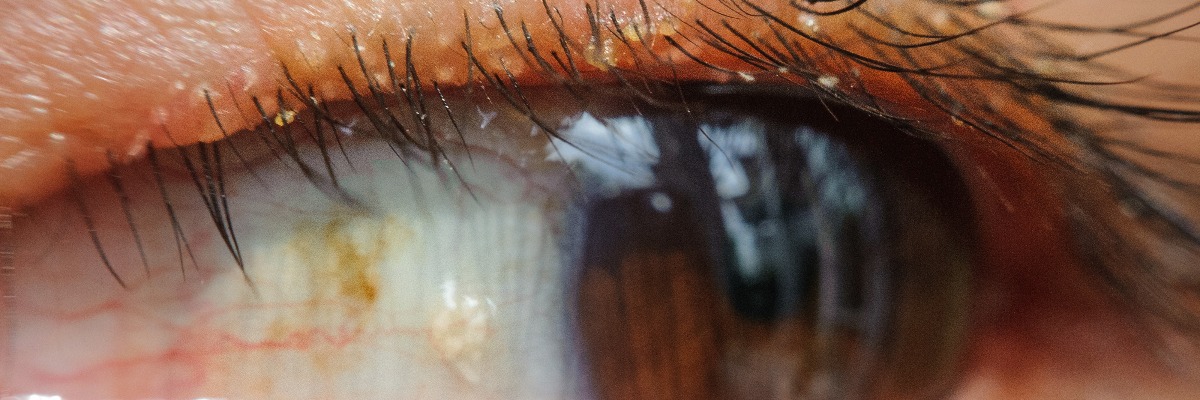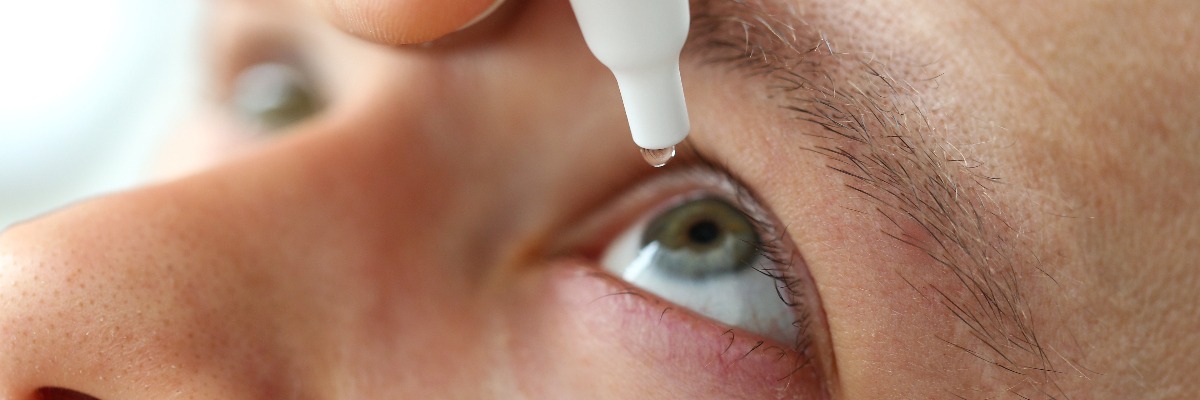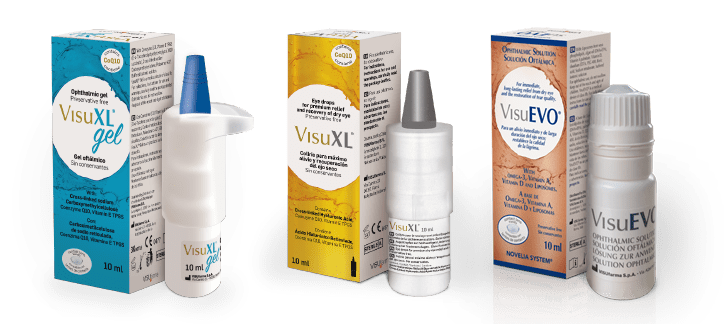Blepharitis and Dry Eye
Are you unsure whether you have blepharitis or Dry Eye Syndrome? In this blog, we’ll tell you everything you need to know about the two conditions and how to treat them.
What is the difference between blepharitis and dry eyes?
Although they can have some symptoms in common, blepharitis and Dry Eye Syndrome have very different causes.
Blepharitis is usually caused by poor eyelid hygiene, with bacteria feeding on debris in the eyes and eyelids.[1] This can make your eyes itchy, sore and feel gritty. Your eyes will often stick together and produce flakes and crusts at the base of your eyelashes.[2]
Dry Eye Syndrome is often caused by not having enough quality tears to lubricate your eyes.[3] Symptoms of Dry Eye include itchy and burning eyes, feeling fatigued and blurry vision.

Can blepharitis be caused by dry eyes?
Dry eyes can be caused by blepharitis, but there is little evidence to suggest that blepharitis is caused by dry eyes.
Dry eyes and blepharitis are connected through meibomian gland dysfunction. Meibomian gland dysfunction can cause Dry Eye, and research has found that blepharitis can often cause meibomian gland dysfunction.[4]
How do you treat Dry Eye and blepharitis?
If you have dry eyes and blepharitis, you should clean your eyes twice a day.[2] To do this, you should:
1. Apply a warm compress to your eyes, such as a MeiboPatch® and keep it on your eyes for 7-10 minutes. You can browse our MeiboPatch® options here: MeiboPatch® [1] [5]
2. Remove the compress, keeping your eyes closed. Massage your eyelids and eyelashes with an eyelid foam, like Naviblef Intensive Care®. Take care not to touch or open your eyes during the application. You can find out more about this here: Naviblef Intensive Care®
3. Let the foam dry before you open your eyes and leave the product on for 3-5 minutes.
4. After each use, rinse your eyelashes and eyelids with warm water.[6]
Whilst treating your blepharitis, you should avoid wearing contact lenses and eye makeup.[2]

What are the best eye drops for blepharitis?
Lubricating eye drops and gels can help your blepharitis. To find out whether you should opt for eye drops or eye gel for dry eyes, read our helpful resource: Eye Drops vs Eye Gel for the Treatment of Dry Eyes
For more information about conditions related to dry eyes, visit our blog: 6 Conditions that Cause Dry Eye
In most cases, the best way to treat dry eyes, Also known as dry eye syndrome, is to use eye gel or eye drops.
VisuXL Gel® is a preservative-free smart gel lubricant for dry eye syndrome. It provides comfort in a bottle with it’s long-lasting lubrication properties giving 12-hour dosing with just one drop and is suitable for both day and night use.
VisuXL® is a preservative-free eye drop lubricant for dry eye syndrome. Due to its unique ingredients, VisuXL® will help you recover from eye surgery, an injury or persistent damaging dry eye.
VisuEvo® is a preservative-free eye drop that prevents excessive evaporation of the tear film. Its unique formula contains omega-3 essential fatty acids, Vitamins A and D and ultra-filtered phospholipids that facilitate tear film presentation and control evaporation.
All three products are contact lens-friendly and can be used for 180 days after opening.
Shop now
References
- Lovering, C. ‘How Are Blepharitis and Dry Eye Syndrome Connected?’, Healthline, 26/10/22. Accessed April 2023.
- NHS, ‘Blepharitis’, 08/02/22. Accessed April 2023.
- American Optometric Association, ‘Dry eye’. Accessed April 2023.
- Messmer, E. M. ‘The Pathophysiology, Diagnosis, and Treatment of Dry Eye Disease’, Deutsches Ärzteblatt, 2015 Jan; 112(5): 71–82. Accessed April 2023.
- Visufarma, ‘Meibopatch’. Accessed April 2023.
- Visufarma, ‘Naviblef Intense Care foam’. Accessed April 2023.




